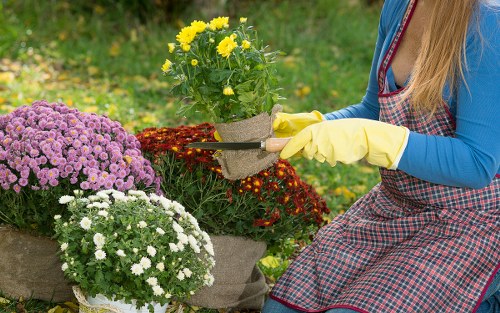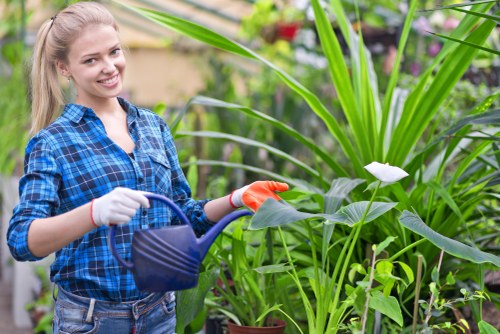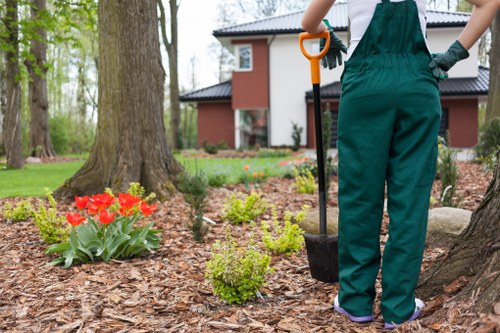Comprehensive Guide to Garden Maintenance in Belmont

Introduction to Garden Maintenance
Maintaining a beautiful garden in Belmont requires dedication, knowledge, and the right resources. Whether you're a seasoned gardener or a beginner, understanding the essentials of garden maintenance can help you create a thriving outdoor space. This guide covers everything you need to know to keep your garden looking its best throughout the year.
Belmont's climate plays a significant role in garden maintenance. With its mild winters and warm summers, certain plants thrive better than others. By selecting the right plants and employing effective maintenance strategies, you can ensure your garden remains vibrant and healthy.
In this article, we'll explore various aspects of garden maintenance, including soil preparation, plant selection, watering techniques, pest control, and seasonal care. By following these guidelines, you'll be well on your way to achieving a stunning garden in Belmont.

Soil Preparation and Fertilization
Understanding Soil Types
Soil quality is the foundation of a healthy garden. Belmont's soil can vary, so it's essential to understand the type you have. Common soil types include sandy, clay, and loamy. Each type has its characteristics and requires specific maintenance techniques.
**Sandy soil** drains quickly but may lack essential nutrients. To improve it, add organic matter like compost or peat moss. **Clay soil**, on the other hand, retains water and can become compacted. Incorporating organic matter and ensuring proper drainage can enhance its structure. **Loamy soil** is ideal for most plants, offering a balance of drainage and nutrient retention.
Conduct a soil test to determine its pH and nutrient levels. This information will guide you in choosing the right fertilizers and amendments to optimize plant growth.

Plant Selection and Placement
Choosing the Right Plants
Selecting plants that thrive in Belmont's climate is crucial for a successful garden. Consider native plants, as they are well-adapted to the local environment and require less maintenance. Additionally, think about the sunlight, soil, and water requirements of each plant to ensure they are compatible with your garden's conditions.
Some popular plants for Belmont gardens include:
- **Lavender** – Known for its fragrance and drought tolerance.
- **Roses** – Classic flowers that add color and beauty.
- **Hostas** – Great for shaded areas.
- **Succulents** – Low-maintenance plants that require minimal watering.
When placing plants, arrange taller plants at the back and shorter ones in front to create depth and visual interest. Group plants with similar needs together to streamline maintenance efforts.

Watering Techniques for a Healthy Garden
Efficient Watering Practices
Proper watering is essential for garden maintenance. Overwatering can lead to root diseases, while underwatering can stress plants and inhibit growth. To maintain the right balance, consider the following techniques:
- **Drip Irrigation** – Delivers water directly to the plant roots, reducing evaporation and water waste.
- **Soaker Hoses** – Ideal for garden beds, allowing water to seep slowly into the soil.
- **Watering Early or Late** – Watering during the cooler parts of the day minimizes evaporation and ensures better absorption.
- **Mulching** – Applying mulch helps retain soil moisture and regulate temperature.
Adjust your watering schedule based on seasonal changes and rainfall. Monitoring soil moisture levels can also help you determine when to water, ensuring your plants receive the right amount of hydration.

Pest and Disease Management
Identifying Common Pests
Pests can wreak havoc on your Belmont garden if not managed effectively. Common garden pests include aphids, slugs, caterpillars, and beetles. Regularly inspect your plants for signs of infestation, such as damaged leaves, discoloration, or the presence of the pests themselves.
Implement integrated pest management (IPM) strategies to control pests sustainably. These strategies include:
- **Biological Control** – Introducing natural predators like ladybugs or beneficial nematodes.
- **Cultural Practices** – Rotating crops and maintaining plant health to reduce vulnerability.
- **Mechanical Control** – Hand-picking pests or using barriers like nets and traps.
- **Chemical Control** – As a last resort, use eco-friendly pesticides to minimize environmental impact.
Preventing diseases involves proper garden hygiene, such as removing dead plant material, ensuring good air circulation, and avoiding overhead watering to reduce moisture-related issues.

Seasonal Garden Maintenance
Spring Care
Spring is a crucial time for garden maintenance in Belmont. Start by cleaning up any debris from the winter months. Prune dead or damaged branches, and prepare your soil by adding compost or other organic matter.
Planting new flowers, shrubs, and trees is ideal during this season. Ensure they have the right conditions to establish roots before the heat of summer sets in.
Apply a balanced fertilizer to support new growth and keep an eye out for early signs of pests and diseases.

Summer Care
During the summer months, focus on maintaining adequate moisture levels. Implement efficient watering techniques and mulch to conserve water. Regularly deadhead flowers to promote continuous blooming and prevent the plants from expending energy on seed production.
Keep an eye out for pests, which are more active in warmer weather. Address any issues promptly to prevent them from spreading.
Ensure proper ventilation for plants to minimize heat stress and encourage healthy growth.

Fall Care
Fall is the time to prepare your garden for the upcoming winter. Start by removing spent plants and any debris that could harbor pests. Prune trees and shrubs to shape them and remove any weak or crossing branches.
Planting in the fall allows trees and shrubs to establish roots before the cold weather sets in. Apply mulch to protect plant roots from temperature fluctuations and prevent soil erosion.
Conduct a final fertilization to provide essential nutrients for the dormant period.

Winter Care
Winter garden maintenance involves protecting your plants from harsh weather conditions. Apply a thick layer of mulch around the base of plants to insulate the roots from freezing temperatures.
Cover delicate plants with burlap or frost cloth to shield them from frost and heavy snow. Avoid pruning in winter, as it can leave plants vulnerable to damage.
Plan your garden layout and make a list of plants you want to add or replace in the coming season. This preparation will set you up for a successful spring garden.

Tools and Equipment for Garden Maintenance
Essential Gardening Tools
Having the right tools is vital for efficient garden maintenance. Invest in high-quality tools that are comfortable to use and durable. Some essential gardening tools include:
- **Pruning Shears** – For trimming and shaping plants.
- **Garden Fork** – Useful for turning soil and aerating beds.
- **Watering Can or Hose** – For effective watering.
- **Gloves** – Protect your hands from thorns and dirt.
- **Trowel** – Ideal for planting and transferring small plants.
Regularly maintain your tools by cleaning and sharpening them to ensure they remain effective and safe to use.
Consider investing in ergonomic tools to reduce strain and improve your gardening experience.

Landscape Design and Planning
Creating a Vision for Your Garden
Effective garden maintenance starts with thoughtful landscape design. Plan your garden layout by considering the existing features, such as trees, slopes, and structures. Create zones for different purposes, such as relaxation, dining, or play areas.
Incorporate a variety of plants to provide texture, color, and seasonal interest. Use hardscape elements like pathways, benches, and pergolas to add structure and functionality.
Consider sustainable practices in your design, such as incorporating native plants, rainwater harvesting systems, and composting areas to promote environmental stewardship.

Eco-Friendly Garden Practices
Sustainable Gardening Tips
Adopting eco-friendly practices in your garden not only benefits the environment but also enhances the health and resilience of your plants. Here are some sustainable gardening tips for Belmont:
- **Composting** – Recycle kitchen scraps and garden waste to create rich compost for your soil.
- **Rainwater Harvesting** – Collect rainwater to reduce dependence on municipal water sources.
- **Organic Gardening** – Use natural fertilizers and pest control methods to maintain soil health and plant vitality.
- **Native Plants** – Incorporate native flora to support local wildlife and reduce maintenance needs.
Implementing these practices can lead to a more sustainable and self-sufficient garden, reducing your ecological footprint while enjoying a beautiful outdoor space.

Professional Garden Maintenance Services in Belmont
When to Hire a Professional
While DIY garden maintenance can be rewarding, there are times when hiring a professional service in Belmont is beneficial. Professionals bring expertise, equipment, and efficiency to handle complex tasks or large-scale gardens.
Consider hiring a professional for:
- **Landscape Design** – Developing a cohesive and aesthetically pleasing garden layout.
- **Tree Care** – Pruning, removing, or planting trees safely.
- **Pest and Disease Management** – Effectively addressing infestations and plant health issues.
- **Seasonal Cleanups** – Preparing your garden for different seasons with expert care.
Professional maintenance services can save you time and ensure your garden receives the attention it needs to thrive.

Cost-Effective Garden Maintenance Tips
Budget-Friendly Strategies
Maintaining a beautiful garden doesn't have to break the bank. Implementing cost-effective strategies can help you achieve your gardening goals while staying within budget. Here are some tips for budget-friendly garden maintenance in Belmont:
- **DIY Composting** – Create your own compost using kitchen scraps and yard waste instead of buying expensive fertilizers.
- **Mulching with Recycled Materials** – Use fallen leaves, grass clippings, or shredded newspaper as mulch to retain soil moisture and reduce weed growth.
- **Seed Saving** – Collect seeds from healthy plants to grow new ones without purchasing additional seeds.
- **Repurposing Materials** – Use old containers or pallets to create garden beds, plant supports, or decorative elements.
By adopting these strategies, you can maintain a thriving garden while minimizing costs.

Enhancing Garden Aesthetics
Adding Decorative Elements
Enhancing the visual appeal of your garden can make it a more enjoyable space. Consider incorporating various decorative elements to add personality and charm to your outdoor area.
- **Garden Art** – Sculptures, decorative stones, or mosaics can serve as focal points.
- **Lighting** – Solar-powered lights, fairy lights, or lanterns can create a magical ambiance in the evenings.
- **Water Features** – Fountains, ponds, or birdbaths add tranquility and attract wildlife.
- **Seating Areas** – Comfortable benches or outdoor furniture provide spots for relaxation and socializing.
By thoughtfully adding these elements, you can create a garden that is not only functional but also a beautiful extension of your home.
Ready to transform your garden? Contact us today to schedule a consultation with our expert garden maintenance team in Belmont.

